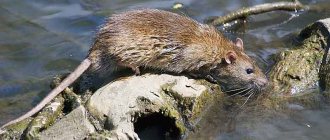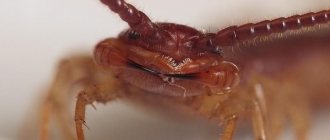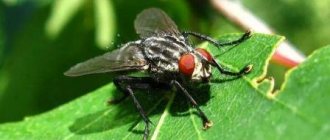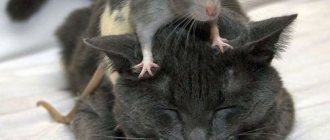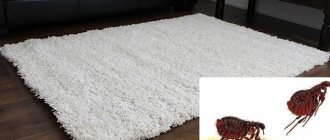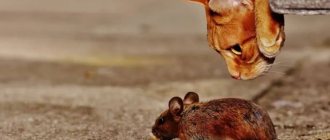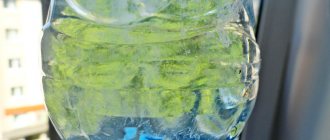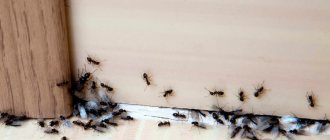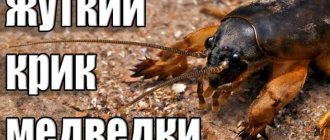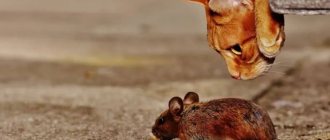The appearance of mice in a summer cottage is always very troublesome and unpleasant. Small rodents can become a real disaster: they chew electrical wiring and insulation, plastic, wood, paper and generally anything that gets in their way. In addition, they can carry various diseases and cause a fire in the house, and the harvest locked for storage in the cellar will be just a “buffet” for them. Practical advice from our experts will help you get rid of mice in your private home forever.
For many summer residents, it happens that an invasion of mice on their property becomes a real disaster.
Sooner or later, any summer resident may encounter a “gray robber” . Mice are distinguished by their fertility and therefore it is easier to prevent their appearance, so as not to remove the entire population later. Since ancient times, people have been fighting these pests that destroy crops, and today many effective methods are known. Among them there are both humane means and quite radical ones.
How to find out about the appearance of mice
Typically, mice move closer to humans as cold weather approaches, but while it’s warm, they feel great in open areas. A country house inhabited only during the summer season is an excellent option to survive frosts and bad weather, and there is always something to profit from.
You can find out about your proximity to mice by the following signs:
- Chewed bark on trees, teeth marks on fruits and seedlings.
- Holes in the sheathing, holes in buildings, small droppings.
- Pets may begin to behave strangely and become restless.
- Eggs disappear from chicken coops, and paths and footprints appear on the property.
- Holes appear in food storage boxes and bags.
- Clothes and other textiles are ruined; at night you can hear squeaks and rustling noises on the roof.
If all or some of these signs occur, you should think about protection against rodents. Delay is fraught with serious consequences for gardening and summer cottage farming.
Mousetraps
The most popular is the old-style wooden mousetrap. It slams shut when the pest reaches for the bait. To increase the effectiveness of the trap, you must adhere to the following rules:
- Place devices near holes and mouse paths.
- Do not charge the trap immediately. Give the rodents a few days to get used to the new item and begin to consider it safe.
- Change the location of the trap from time to time.
On a note!
In the UK they came up with a “smart” mousetrap. It is made in the shape of a pipe and has infrared sensors. As soon as the animal reaches for the bait, the trap will slam shut and fill with water and carbon dioxide. The owner of the device will receive a notification about the caught prey.
Types of pest mice
Most often, garden plots, cottages, country houses and estates can be attacked by one or several species of small rodents. Each type of these pests has its own characteristics and preferences for food and conditions.
House mouse
This pest does not necessarily have to live in houses . It causes harm everywhere: in the garden, in the house, basements and cellars. The ordinary house mouse does not tolerate high humidity and drought, and is sensitive to low temperatures. In the summer, she most often “manages” the site, and with the arrival of cold weather she moves closer to the shelter.
The rodent's diet consists of seeds and insects , but in the house it will happily feast on bulk foods, fruits, vegetables, textiles, paper, furniture, insulation, plastic, insulation and even candles. The house mouse, having found a suitable place, begins to actively reproduce, which makes it very difficult to fight it.
In a year, one mouse can give birth to 10-12 litters, up to 12 pups in each
Vole mouse
There are many varieties of the vole mouse . This representative of the Khomyakov family is distinguished by its gluttony and habit of stockpiling. In dachas and garden plots you can usually find the common vole, which lives in wooded areas and forest-steppe.
The vole's diet is very varied; it will not have to go hungry in the garden. She will happily eat bulbs, succulent rhizomes, seeds, shoots, bark and tubers of any plants. Lives in numerous colonies, which destroy supplies left in the cellar .
Voles are quite popular in our latitudes.
Shrew
The appearance of this rodent is almost no different from an ordinary mouse , with one exception - the shrew's muzzle is more elongated, and its nose is transformed into some kind of proboscis. This representative of the shrew family is more similar in activity to a mole.
Despite the fact that the shrew is carnivorous and eats various larvae and harmful insects, it causes irreparable damage to the crop. In search of food, this small gray rodent is capable of digging up the entire garden and depriving plants of soil and nutrition, thereby ruining them.
Description of pests
Controlling rodents is usually quite difficult, but necessary, because under favorable conditions animals reproduce easily and quickly. Let's find out how these mice differ, what are their characteristics and habits in order to effectively deal with them.
House mouse
The animal Mus musculus or house mouse, which can be found in your home, garage, basement, is characterized by strong synanthropy. Synanthropic organisms are animals, plants, and microorganisms associated with humans. So, this rodent is found wherever people live. Its presence has even been confirmed at research stations in Antarctica.
House mice have many natural enemies that occupy higher positions in the food chain. Many predators feed on rodents - cats, wild dogs, weasels, foxes, birds, snakes. Therefore, in the wild, mice usually live 5-6 months. In the laboratory or as a pet they can live up to 2 years.
A female house mouse reaches reproductive capacity in 2 months. Then every 3-4 weeks the mouse is able to give birth to a dozen children. More than 100 cubs can be born in a year! Therefore, if you notice a rodent in the house, there will soon be many more of them.
Mice are nocturnal animals and go out in search of food after dark. They are omnivores, love to eat fruits, plant grains, meat, and dairy products. They even eat their own excrement, obtaining nutrients produced by bacteria living in their intestines.
They have poor eyesight, but good hearing and smell. Mice use their whiskers to sense temperature changes and surface textures. Rodents live in complex burrows with long entrances and multiple escape routes; they keep the burrows clean - they have separate places for storing food, sleeping, and toileting.
To get rid of mice, you should familiarize yourself with information about their characteristic behavior. Then you will be able to take adequate actions to prevent the rodent from entering your house or warehouse.
Features of behavior:
- House mice are very curious creatures. Every day they explore new territories in search of food sources. It is worth taking care to block any possible ways for rodents to enter the house. It is necessary to seal the holes with silicone or cement mortar. Additional protection is to store food in the pantry or basement in carefully closed containers.
- The animal is looking for warm places. The assault on houses or warehouses occurs from October to February, when rodents are looking for premises where they can shelter from the cold, get food and water. When the temperature drops by several degrees, they take refuge in basements, sheds, houses; rodents may also appear in a city apartment.
- Every year it is necessary to properly prepare for the upcoming cold weather by conducting a thorough inspection in the fall of the premises most susceptible to unwanted visits from rodents.
- Greed. The mouse eats 15-20 times a day. She makes a burrow close to food sources (up to 8 m away) for easy access. At night, the animal moves between different feeding points, taking only 0.15 g of food from each point. To track an animal, you need to check in which places there are traces of food (for example, a specific smell), then look for holes nearby.
- Loves to take a bite and throw it away. A mouse's teeth grow throughout its life. To wear down the teeth to a manageable size, the animal must continually bite and chew on objects. Victims of biting become electrical wires, which can cause a fire. Therefore, it is important to ensure that electrical systems are properly protected. If you suspect the presence of rodents near electrical equipment, you need to start scaring them away as soon as possible. Electromagnetic repellers help with this.
Identifying a potential rodent infestation is much easier than trying to find an actual mouse. Look for the following signs:
- Scratching sounds: These can be heard at night when mice are most active. Listen for sounds between partitions, under floorboards, in false ceilings, basements, and attics.
- Droppings: Mice leave small, dark droppings, especially along walls or in high-traffic areas such as countertops, cabinets, shelves, and under the sink.
- A peculiar odor: mice leave behind a trail of ammonia odor, which is felt especially strongly in confined spaces (closets).
- Mice need to chew on wood, plastic, cables, and other hard materials to keep incisor growth under control. Gnawing can even cause a house fire if mice chew on electrical cables.
- Nests. Rodents build nests from newspapers and fabrics. The nests are usually hidden, for example behind a refrigerator.
- Traces of sebum (spots, streaks) arise due to the fact that mouse fur constantly rubs against walls, floors, and baseboards on popular routes. You may notice dark stripes around holes and corners.
- Paw and tail prints can appear in dusty places, such as unused attics and basements.
- Rodents usually live in basements and attics; it is worth carefully inspecting these rooms to determine whether there are mice or other pests.
Mice can spread up to 200 different pathogens and parasites. They contaminate the surface and food with excrement, excreting it 40-100 times per day. It’s unlikely that anyone would want to find a hole in their favorite sweater, carpet or wiring. Therefore, it is worth taking quick and effective action to combat rodents.
Red vole
Small rodents, bank voles (lat. Myodes glareolus) from the family Hamsters (lat. Cricetidae) cause enormous damage. The vole lives in meadows, wastelands, gardens, and greenhouses. She has a stocky body, a short head, and a blunt muzzle. The vole lives 2-4 months, often in colonies. The female gives birth 6-7 times, 5-10 cubs per litter. Males and females care for their own and other people's offspring, so the death of the parents does not entail the death of the cubs. The vole feeds within a radius of 10-15 m around the burrow. She does not fall into winter sleep; in winter she continues to dig tunnels in the ground, sometimes moving into wooden outbuildings. This is the most common and dangerous pest among rodents.
Voles can damage:
- rhizomatous plants (carrots, parsley);
- vegetables; fruits, flower bulbs;
- plant roots;
- bark of trees, especially young ones.
How does a vole differ from a house mouse?
- fur color - the vole has reddish-brown fur, hence its name - bank vole, house mice are gray-brown;
- the vole is smaller in size - 15 cm long (including the tail and body itself: 10 cm), weighing 20 g;
- more often found in the ground, not in the basement, house;
- has characteristic black large eyes and sharp teeth, thanks to which it gnaws through twigs, roots, and bark;
- distinctive feature is a two-color tail;
- shorter tail and paws than the house mouse.
Voles come out in the evening and at night. They will not damage basements and only feed in the garden. Some people confuse the damage caused by voles with the destruction caused by moles. Unlike moles, voles do not create mounds. This is the easiest way to determine who has settled in the garden - voles or moles. Voles dig tunnels with a diameter of 5 cm. The entrances to the burrows are located nearby. They gnaw plants from below, causing them to quickly wither.
What danger do mice pose to the farm?
Small pests can cause great and irreparable damage to a person’s home, supplies and health. Actively breeding and eating everything, they can bring a lot of problems and inconveniences.
What harm do mice cause?
- They eat food , and those that are not completely destroyed simply spoil. Wool, skin particles and rodent excrement found in food products can cause an outbreak of allergic reactions, intestinal infections, poisoning and exacerbation of various diseases.
- They carry fleas that carry infections dangerous to humans. They carry viruses and diseases that cause typhoid, plague, cholera and severe poisoning.
- They chew through wiring , which can cause a fire. In a house where mice live, there is a persistent, characteristic odor.
- They damage the walls by gnawing holes and passages in them, taking out insulation and insulating material. Damage textiles and clothing.
Mice and other rodents cause irreparable damage to the household
How to make an expanded clay mouse lock
Expanded clay lock prevents rodents from entering the house through the floor. With this method, expanded clay is included in the floor cake. Here is the floor pie (from the ground):
- layer of expanded clay (30 cm or more),
- polyethylene film;
- two layers of OSB-3;
- expanded clay;
- OSB impregnated with boric acid and synthetic wax.
Expanded clay will become a mechanical obstacle for mice, and boric acid will act as an additional chemical repeller until it wears off.
Another way to protect your floor is to cover all cracks with galvanized steel strips. In this case, the floorboards are laid directly along the joists, without insulation, the cracks are covered with wide (about 10 cm) strips, they are nailed to the floor, and the top is covered with insulation and sheathing.
Effective ways to control mice
Having learned about an unpleasant neighborhood, it is important to take action as soon as possible. There are a lot of ways to combat tailed pests, but not all of them are equally effective. Some of them are really not for the faint of heart, so when choosing the most suitable method you need to pay attention to the following factors: population size, presence of children and pets, volume of food supplies, type and area of premises, chemicals (poisons).
Poisons are one of the most effective ways to control mice on the property and in the house . They are all divided into four main types:
- Inorganic . Such drugs contain heavy metals that cause severe poisoning in mice. For the desired effect, there must be a lot of poison.
- Organic . A very small amount is enough.
- Cumulative effect . Toxins accumulate in the pest’s body, disrupting the functioning of its organs and gradually leading to death.
- Fast-acting . The poison acts instantly.
Mice love sugar, so they will willingly eat sweet bait
Mice control chemicals can be purchased in the form of:
- Poroshkov . Used for making baits.
- Gels and creams . They remain effective for a long time and can attract several rodents at once. Such preparations are supplemented with flavorings and flavoring additives, which makes them tasty morsels for mice.
- Briquettes, tablets . Convenient to sprinkle in hard-to-reach places. They have an attractive smell and bright color for small rodents.
- Liquids . Toxic compounds are dissolved in water.
- Spray and aerosols . They induce vomiting and nausea in mice and drive them away from the site. The most humane of the above methods of getting rid of pests. Repellents do not reduce the number of rodents, but force them to look for a new home.
The use of poisons in the home and on the property requires great caution. It is important to prepare the room, study the recommendations and instructions, and also protect your household and pets from unwanted exposure to toxic substances.
Summer residents often resort to folk methods of making poison . For this, improvised items and some food products can be used: sugar, flour and gypsum in a ratio of 1/2/6 or powdered sugar, flour and quicklime (1/2/6).
There is no limit to the gluttony of mice; this disadvantage can be used against them
Preparing mouse traps
- Efficiency 80% . A champagne or wine cork is finely chopped and fried with butter in a frying pan. The prepared “dish” can be mixed with any cereal, so the likelihood that an annoying rodent will eat the prepared delicacy increases greatly. Such a treat causes severe indigestion in the mouse, which is almost always fatal.
- Efficiency 90% . A mixture of gypsum, dry potatoes and cinnamon will leave mice virtually no chance. You can mix equal parts of flour and putty, adding salt and water. If a mouse eats this mixture, its days will be numbered.
- Efficiency 100% . This folk method has also proven itself well. 20 g of flour, 5 g of barium carbonate and 30 g of melted fat are mixed, and the resulting mixture is formed into balls, which are laid out near mouse holes. You can also put small pieces of foam rubber there and soak them in sunflower oil.
It is important to note that, for obvious reasons, poisoned mice will have to be removed, so most chemical agents cannot be called humane, and faint-hearted gardeners and summer residents will have to look at other methods.
Seeds and cereals are a favorite treat for mice
How mice get into the house
Mice enter homes in a variety of ways. Here are the most common:
- Through passages in the ground . Mice dig under the foundation lining and end up under the floor, from where they climb into the house through cracks or gnaw holes in the floor, in corners, etc.
- Through the wind holes . The mice perceive vents unprotected by bars in the foundations as hospitably open doors. Mice can live in ventilation ducts, penetrating through them into the structure of walls, ceilings, etc.
- Through building materials . Mice, not as rarely as we would like, settle in large foam and aerated concrete blocks, ready-made frame structures insulated with foam plastic, etc. These cunning rodents can hide in a building element and wait until the installation of the structure is completed.
The location of the house in the mouse issue is more important than the material of the walls: if the building is located not far from the field, then in the fall dozens of mice will be attracted to it.
But if you protect the house (and better at the construction stage), close all the cracks, cover the holes with bars, make the floor structure insurmountable for rodents, then they, realizing the futility of their attempts, can forever forget the way to this building.
How to repel mice
Today, manufacturers offer a huge range of special devices that repel small rodents. They are not only effective, but also safe for animals and people. In addition, the use of such devices will help to avoid the unpleasant procedure of cleaning up dead animals.
Important! When choosing such devices, it is worth considering several factors: range, availability of a power source, convenience and safety, signal frequency.
Ultrasonic repellers
Emits high frequency vibrations that cause panic, anxiety, disorientation and fear in small rodents. A person does not hear or perceive these vibrations in any way, and the mice quickly leave the affected area.
Pros:
- Using the device is easy and convenient.
- Long period of continuous operation.
- Environmentally friendly.
- Safety for humans and pets (except for decorative rodents).
- Impact on flying and blood-sucking insects.
The frequency of the switched-on device ranges from 20 kHz to 70 kHz, which prevents rodents from getting used to the sound. Some models are equipped with a light indicator that emits flashes of light that prevent mice from finding their way around.
Ultrasonic mouse repellers are used by most summer residents
When choosing a high-frequency device, it is important to consider some disadvantages:
- Textiles, paper and other soft fabrics that actively absorb sound may reduce the performance of the device.
- The operation of the device is limited to the walls of the room.
Don't rely on the pests to disappear immediately. For the desired effect, it is important that there are as few obstacles as possible in the path of the ultrasonic repeller, and within a few days or weeks the mice will disappear completely.
Electromagnetic repellers
Electrical wiring is required for the electromagnetic repeller to work. The impulses are transmitted through wires and act on rodents in the same way as ultrasonic devices: mice begin to experience discomfort, anxiety, panic attacks and quickly leave their habitable places.
Advantages of electromagnetic repellers:
- Safety.
- Environmentally friendly.
- Possibility of long-term continuous operation.
- The impulse is not absorbed by upholstered furniture, fabrics, textiles and other materials.
- Large coverage area without affecting other electrical appliances.
- Impact on rodents inside voids in walls and ceilings.
- Impact on creeping insects.
The only disadvantage of electromagnetic repellers is that the wiring must be laid throughout the entire building or at least along the longest wall. Otherwise, the use of such a device will be useless.
Combined repellers
This type of repeller combines all the positive qualities of electromagnetic and ultrasonic devices. The price of such devices may be noticeably higher, but this easily compensates for the effectiveness of combined rodent repellers.
Getting rid of mice in a private home and garden once and for all is the dream of any summer resident
How to remove mice
Getting rid of mice and how to remove them yourself is the primary question that arises when residents of an apartment or private house discover traces of excrement and a characteristic mouse smell.
When mice appear in the house
When mice appear in the house Mice usually appear in the house during the autumn off-season, when the crops are being harvested in the fields and it becomes cold.
Crowds of mice rush to cities and villages, thereby causing a lot of trouble, mostly to residents of private houses.
Along with the fact that mice are carriers of infectious diseases, they can also become a source of fleas or ticks that can enter the house with their arrival.
However, it sometimes happens that mice also appear in apartments, especially if these are old buildings with wooden floors and shingled walls, where rodents can easily make passages for themselves, thereby destroying the wooden covering (see also what harm shashel causes to wooden structures of a house).
But residents of modern high-rise buildings are also not immune from the appearance of mice in their apartments. Mice can get in through garbage chutes and ventilation shafts.
Mechanical traps (mousetraps)
The list of structures that are used to combat unwanted neighbors is very long. Devices for catching pests are constantly being improved and modified. Mousetrap with frame
This is a long-known structure with a base made of wood, metal or plastic, to which a metal frame and spring are attached. When the mouse grabs the bait, the mechanism is triggered and the frame kills the rodent.
Minuses:
- False alarm, jamming.
- Mice learn to deceive the structure and drag the bait with impunity.
- Low degree of effectiveness with large numbers of mice.
The disadvantages of a mousetrap include the fact that after the mousetrap has fulfilled its intended purpose, the caught rodent must be removed, after which the device can be reused.
Mouse trap
Means of struggle
Mousetraps
There are different ways to combat the spread of rodents; the classic option is the use of mechanical devices - mousetraps.
These devices operate on the principle of a trap; the mousetrap has:
- spring;
- lever arm;
- wooden platform;
- hook for attaching bait.
Rodents smell food and approach the bait, at this moment the spring is triggered and the lever sharply hits the victim.
This device is inexpensive, but it may not be effective in every situation, since the destruction of mice occurs individually and not in large quantities. There are also other, more effective ways to get rid of mice.
Watch the video! The best poison against mice!!!
Rodenticides (chemical poisons)
In addition to mechanical devices, chemicals can also be used as bait to kill pests.
Attention! The bait should be laid out on a substrate, which can be paper, cardboard or a bag, keeping a gap of 1-3 or 4 m, depending on the instructions. After a couple of days, you can see if the animals have eaten the bait. If yes, then you should add more.
A significant disadvantage of this method is that mice die in the voids of walls, ceilings and ventilation ducts, and subsequently decompose there, producing a stench throughout the room.
As examples, we can consider the most effective baits that allow you forever and at the same time remain safe for use in a residential area.
"Ratsid"
- This substance is available in the form of a gel.
- The volume of the plastic bucket containing the product is 5 kg.
- The main active ingredient is alpha-naphthylthiocarbamide (rat), which is contained in a proportion of 100 g per 1 liter of the entire drug.
- The product acts as a raticide and rodenticide (against rodents) and belongs to the group of intestinal pesticides.
- It is very toxic to humans. Depending on the concentration of ratsid, the substance has hazard class 2 or 3. It is necessary to treat an apartment with this product when no one lives there for 2 weeks.
- This product is stored for 5 years.
- It is recommended to soak the bait with the prepared solution.
"Mouse Poison"
- This drug is available in the form of granules - grains treated with poison, which is not noticeable to the victim.
- The weight of one bag is 150 g.
- The granules should be poured out of the bag onto a pile using a paper or cardboard backing. Then, these substrates should be placed at a distance of 1-2 meters between each other along the entire perimeter of the room. You should also place the product in places where the greatest rodent activity has been observed.
- Rodents die 4-6 days after trying the bait. The effect of the drug is especially reflected on the respiratory system of the animal. The pest begins to choke and seeks access to fresh air. Dead rodents are most often found in ventilation ducts, elevator shafts, basements or garbage disposals.
Protective spray against rodents "MERDER-SCHUTZ"
- The product is produced in the form of a toxic liquid in a pressurized can.
- Capacity volume 200 ml.
- Produced in Germany.
- Combinations of various aromas and odors that rodents do not like are the active components of the drug.
- The strong odor of the product only affects rodents. The drug is not highly toxic for humans and animals. The product is ideal for treating apartments and cars.
- The substance will repel rodents for 2 weeks. It is recommended to spray the product not only on gnawed holes, but also on various interior items, wires, and corners where rodents may appear.
- In order to protect the premises for a longer period, treatment should be carried out after 2 weeks.
- The product is stored for 2 years.
Ultrasonic repellers
The use of electrical appliances to repel rodents is an interesting and practical, modern method. Devices of this type most often operate from the mains, but there are devices that operate on batteries or recharge. These devices are used indoors. It is recommended to place them in the apartment in the bathroom, kitchen or pantry. The device does not pose any danger to people, and mice avoid the area in which it is installed.
Glue traps
You can also remove pests using a substrate made of plates on which special glue is applied. To do this, such plates should be placed in areas where rodents are active or along the perimeter of the room. Food should be placed next to or on the adhesive part so that rodents that smell the food will try to get it and get directly onto the adhesive base. Once stuck in the glue, the animals die.
Several examples of such traps are presented below.
Trap "MR.MOUSE"
- This trap is a plate with technical glue applied to it. Each side of the plate is protected by a film, which should be removed before installing the trap.
- One package contains 2 plates.
- The substrate has parameters - 135x200 mm.
- In an apartment, these plates should be placed at a distance of no closer than 2 m from each other.
Site "KAPKAN"
- A trap is produced in the form of a flat plate on which the bait is placed. The rodent, approaching it, falls into a trap and becomes a victim of the adhesive base.
- The active components of the adhesive base are: rubber 50%, polyisobutene 24%, food attractant 2% and mineral oils 10%.
- This product is absolutely safe for humans and animals.
- The influence of the smell of bait and glue, attractive to rodents, extends to 4 square meters.
- It is best to place this trap in the corners of the room, next to the baseboard, under the bathroom, in the pantry, behind furniture and against the walls.
- Bait can be made using nuts, toasted bread, and hard cheese.
Glue "ALT"
- This product is produced in the form of a colorless, odorless glue.
- The packaging is a special tube.
- Its volume is 135 g.
- Active substances: polyisobutylene, cycloisan, polybutylene.
- It is resistant to moisture.
- Being an obstacle in the way of rodents is the main principle of operation.
- The glue is used as follows - it is applied to a 10*10 cm substrate made of wood or plastic and glue tracks 2 cm wide are applied, in the center or at a distance of 3 or 5 cm.
- The product becomes sticky 30 minutes after application.
- Such traps should be placed near a hole or opening from which rodents may emerge.
Professional help in rodent control
Healthy! To bait mice, specialists use chemical toxic substances; in order to enhance their effectiveness, they mix several elements at once.
Deratization, carried out professionally, is very effective and shows excellent results.
How to make a mousetrap with your own hands
Some craftsmen who do not want to spend their money on expensive devices for catching mice have learned to make mousetraps with their own hands, and they make them from improvised materials. Absolutely everything is used: old buckets, pipes, ropes, cages and other rubbish lying around in the garage or pantry.
Swing trap
Swings, springboards, water captivity - these are also names for such structures. They allow you to catch many pests at once in a short period of time. You can easily make such a trap yourself using: a capacious container (bucket, barrel) , a rail or ruler , a stiff knitting needle or wire .
The wire is firmly fixed perpendicular to the rail and the “swing” is installed on the bucket so that it touches only one side of it. A bait is attached to one end and the device is installed in the right place. The principle of operation is that the animal walks along a stable edge towards the bait and falls into the bucket. The container can be left empty or water can be poured into it.
Swing trap for catching mice
Tube mousetrap
For those who are afraid of mice (living or dead), this design is perfect. The design of the trap is very clear: an opaque pipe, bait and a mechanism that will prevent the mouse from running back out. Some types of such mousetraps are also equipped with a striking device.
You can lower one edge of the pipe, inside of which the bait is glued, into a jar or bucket. Having reached the bait, the mouse will not be able to hold on to the slippery surface and will fall down.
Pipe and jar trap
Live trap cages, traps
The designs are borrowed from hunters. Live trap cages are simply steel cages with bait attached inside them. When the mouse begins to drag the treat, the automatic door is activated, which prevents the animal from getting out. Mouse traps are miniature versions of regular traps for large predators . They also consist of a solid base, a cocking mechanism and a bait. The mechanism slams shut and causes serious harm to the rodent.
Live trap cages allow you to release unharmed mice into the wild . The so-called “House” trap has a similar design. It consists of a curved pipe with doors on both sides. When the rodent approaches the bait, the door slams shut and the animal can no longer get out.
Live trap cages are the most humane way to catch rodents
Harm to humans
Mice are primarily a source of infections. They can carry many diseases that can be transmitted to humans, from intestinal infections to tuberculosis.
READ ALSO: How to remove rodents and catch a mouse in a house without a mousetrap: humane methods of control
They spoil all the things they can get to - they gnaw on supplies, make nests in things stored for storage, gnaw passages in the walls and floor, disrupting the thermal conductivity of the room.
Rodents are extremely allergic. Their fur, saliva and excrement can cause a severe asthma attack in a person prone to this disease.
Mice smell extremely bad and it is very difficult to get rid of the smell of their waste products.
How to get rid of mice in a private home forever
- Trap with a loop . A simple device consisting of a wooden block with one or more holes, loops and threads. The mouse, in order to get to the tasty bait, chews the thread and gets caught in a wire loop.
- Bottle trap . If desired, such a trap can be built from scrap materials. A plastic bottle with a lid is suitable for this. The container is installed horizontally at a slight angle so that the neck is higher. Bait is placed at the bottom of the bottle. The principle of operation is that the rodent crawls into the neck of the bottle for bait, and when it returns to the wild, the structure tilts and the rodent stumbles upon an obstacle.
- Trap jar . The design of the trap is extremely simple: place the jar upside down, place the bait, lift one edge of the neck and secure it with a coin or cardboard.
- Electric mouse trap . The trap is filled with treats for mice and connected to the net. A mouse falling into such a mousetrap touches the contacts and receives a fatal electric shock.
- Glue traps . This method cannot be called humane, but it is quite simple and inexpensive. These can be ready-made cardboards with an adhesive layer or just a tube of glue. The substance emits a pleasant aroma for rodents, and when they touch the sticky substance, they can no longer get out.
If you take the matter seriously, the mice won't stand a chance
Insulation and rodents: is there a solution?
Let's be clear right away - most modern floor insulation materials really don't eat mice, but at the same time they live quietly in them. And they also build nests in soft ones.
Fun fact: Mice's teeth grow throughout their lives. Moreover, if the mouse does not constantly chew something, then these teeth will grow into its upper jaw. Therefore, gnawing is a daily need for this animal. And the mouse can even sharpen concrete walls.
Oddly enough, mice are especially often found in polystyrene foam. Moreover, they gnaw on it - but not with the goal of getting enough, but with the goal of building comfortable nests in it. And therefore, manufacturers recommend insulating walls and floors with ecowool, which is looser and creates an antiseptic environment. But mice also gnaw on it, although not so willingly.
After all, as practice shows, mice can live under the floor in ecowool, foam plastic, and almost any other insulation. Even in glass wool! However, it is worth noting that it is very difficult, almost impossible, for a mouse to chew through ordinary plywood and OSB boards. All because of the structural features of her teeth. Like slabs that have a layered structure with wood chips directed in different directions.
The secret of the survival of these animals in any conditions is their extreme unpretentiousness. That’s why they gnaw holes for themselves in anything, in a word.
Traditional methods of fighting mice
If uninvited guests appear at your dacha, you can use traditional methods of fighting mice. Oddly enough, but they are still the most effective.
The following methods are most effective:
- Wood ash . Wood ash scattered on mouse paths and in hard-to-reach places will irritate the paws of rodents and force them to avoid treated areas.
- Burdock . The spines cling to the fur and cause severe discomfort.
- Bleaching powder . The walls and entrances to burrows are well treated with chlorine; mice are very afraid of it, so you are unlikely to see them again in these places.
- Branches of black currant . Coniferous trees, black currants, wild rosemary emit a strong aroma that mice do not like, and also create obstacles if they are pushed into holes or covered with entrances.
- Essential oils . Wormwood, elderberry and mint oils are excellent for preventing the infestation of gray pests. They impregnate rags with them, which are stuffed into holes and the animals will run away from their nest for several months.
- Pepper and newspaper . You can smoke out rodents by wrapping a pepper pod in several layers of newspaper. Smoldering pepper will fill the room with smoke. Convenient to use in basements and cellars. It is advisable for the smoke to remain for several days in a row.
- Sulfur checker . You can do the same with a sulfur bomb as with pepper. The main thing is not to ventilate the room for 1-2 days. Additionally, thresholds, baseboards and furniture are treated with Vishnevsky ointment and birch tar.
To protect the area, black root, black currant, spurge, wormwood, mint, and cilantro are planted around the perimeter. You can scatter pine branches, fabric soaked in kerosene, sawdust treated with creolin, elderberries, reeds, and tomato tops. The house is protected from unwanted guests with mint alcohol, peppermint oil, garlic, chamomile, and tansy.
How to deal with voles?
Before deciding how to get rid of field mice in the garden, keep in mind that rodents perform an important function in nature, so it is better to drive them out, take them to the forest, without destroying them. If humane methods fail, take radical action.
Rodents love certain conditions - they live well in gardens, greenhouses, where there is fertile, humus soil, or where tunnels have been dug out by moles. To effectively get rid of voles in a summer cottage, several methods are used at once. Exposure to one remedy will not usually give the desired results. Below are proven ways to control voles.
Do not use a thick layer of mulch
Mulching the soil prevents weeds from growing quickly, retains moisture in the soil and is extremely beneficial for plants. However, you should not use a thick layer of mulch; voles love it.
Make it difficult to access plants
Voles love to eat bulbous plants and the soft bark of fruit trees. To protect the trunks of young trees from rodents, it is enough to use special plastic garden fences or cover the trunks with straw.
For bulbous plants, it is enough to use special baskets in which the bulbs are buried in the ground, preventing the access of mice. Baskets for planting bulbs should be made of durable materials, such as galvanized steel wire.
Voles will not get through to the roots and bulbs that have protection. You can lay out a PVC mesh or wire between the crops - this will make it difficult for rodents to access.
Destroy dug corridors
Rodents build a network of tunnels underground, so it's worth looking for entrances to them. If corridors are discovered, they should be filled with water or plugged. If this doesn't help, you can dig up the ground.
Natural enemies are predators
The first line of defense against rodents is their natural enemies:
- birds (owl, kestrel, buzzards or buzzards);
- martens;
- hedgehogs;
- domestic cats;
- dogs.
It is worth creating conditions that encourage rodent predators to visit the garden. Voles are extremely shy, so getting a dog or cat is helpful to drive them away from your property. It is worth getting a cat whose night hunting coincides with the life of rodents. Rodents are afraid of cats; when they notice our four-legged friends, they will avoid the garden.
It is worth inviting hedgehogs to live in the garden. They need a quiet place with uncut grass and a small house covered with branches and leaves.
Birds of prey are enemies of voles; it is worth encouraging them to fly to our garden. To do this, you can hang feeders and create observation posts for birds; they will quickly drive out the rodents.
Repellent plants
Voles do not like the following plants:
- marigold,
- garlic,
- mint,
- black currant,
- spurge,
- sweet clover,
- mustard,
- castor bean,
- fresh tomato leaves,
- wild chamomile,
- tansy flower.
Just plant them in your garden early.
At the entrance to the burrows you can place plants whose smell rodents cannot tolerate:
- garlic;
- thuja branches;
- elderberry branches;
- walnut leaves;
- moldy lemon;
- crushed shoots of thyme, juniper;
- mustard greens;
- bowls with dried herbs (mint, chamomile, thyme, lavender, mustard).
Using the right plant will keep rodents out of the garden quickly. You can use ready-made repellents (granular) impregnated with appropriate aromas.
Sound repellents
Sound deterrence is an effective way to get rid of mice, rats, and voles. It is enough to build a simple structure yourself to fix the problem. A bottle placed on a rod buried at an angle will do. A gust of wind entering the interior causes a sound that deters rodents.
An equally effective invention is an aluminum can placed on a metal wire. A tin can moved by the wind will make a lot of noise, scaring away pests.
It is worth paying attention to the store offers - acoustic repellents that feed on the energy of sunlight. The sounds they make are inaudible to people, but they repel mice, voles, and moles, affecting their nervous system. Acoustic repellers are not harmful to pets.
Smoke candles
A good way to control voles is with smoke candles. All you have to do is light a candle and insert it into the vole tunnel. The smoke from the candle settles in the corridors dug by rodents, scaring them away. In order for the product to perform its repellent function, it is important to find the tunnels in which the voles are currently feeding. The substances released from the candle can be harmful, so this method must be used with caution.
Traps
Traps allow you to quickly catch voles without causing harm. Special mechanisms effectively solve the problem of rodents. They are equipped with hatches that close as soon as the voles try to get out. The devices can be easily placed in underground corridors.
Natural preparations
Natural preparations based on organic composition will repel voles, including:
- Castor oil;
- lavender oil;
- garlic extract.
Voles cannot tolerate these substances, but they are not harmful; they only drive rodents out of the garden.
Chemical substances
When all methods of controlling voles fail, garden owners turn to chemicals. Manufacturers offer quite a few different drugs. Their composition is toxic and can harm other animals, it is important to be careful. Individual drugs are injected into the vole tunnels.
Natural (biological) ways to control rodents
If the dacha plot is visited only during a certain season, then this method is not so effective and when the owners leave, the dacha may be inhabited by mice. In addition, some selectively bred pets may lose their hunting instincts.
- Cats and cats . If you prefer to get a cat to catch mice and rats, then you should pay attention to outbred ones, but some purebred cats will also be happy to hunt pests. It is believed that a cat is more responsible in catching mice than a male cat.
- Ferrets . Owners of hens, chicks, ornamental rodents and other small pets should immediately abandon the idea of keeping ferrets. Mustelidae get along well with cats and dogs, but they pose a real danger to rodents. They are small, nimble, and easily destroy burrows and nests—such dacha visitors will become a real nightmare for mice.
- Dogs . Small dog breeds bred specifically for hunting will give mice no chance. They catch not only mice, but also rats and moles.
The cat plays with his lunch
What are the dangers of a mouse infestation?
So, let's see what difficulties ordinary house mice can create under the floor:
- Constant noise at night.
- Gnawed cables, wires and pipes made from certain materials.
- Insulation materials turned to dust.
- A specific and not very pleasant “mouse” smell in the house.
- Found mouse waste in the morning wherever possible.
- Danger of contracting rodent-borne diseases.
And also such unpleasant phenomena as a dead mouse under the floor, which is not easy to find and pull out.
Now imagine that in a year a female gives birth to up to 7 mice in each of 10 annual litters. Those. in 12 months there will already be 60-70 new rodents in your house! And each mouse matures within just three months, and also begins to reproduce. At the same time, mice are fast animals: they can reach speeds of up to 12 km/h, jump up to 75 cm in length, and up to 40 cm in height. Just don’t let this problem take its course - they will eat the house too.
Prevention of rodents
If you constantly maintain cleanliness and order in the area and in the country house, you can avoid the appearance of unwanted guests. Mice settle where they are safe and have enough food. To prevent their occurrence you need:
- Harvest on time.
- Do not leave mulch or grass clippings.
- Periodically plow the ground and burn dry grass.
- Seal cracks in the house and cover vents with grating.
- Products left for storage must be tightly closed and packaged in durable glass or plastic containers.
- Plant mint and lemon balm bushes between the buildings.
- Turn on repellers.
It is possible to defeat mice in your dacha. Using modern assistants and combining several methods of fighting at once, you can drive the “gray bandits” out of your area forever. The main thing is to stock up on patience and “weapons” - then everything will definitely work out.
Author of the article: Kamenkov Igor Dmitrievich
- Related Posts
- How to get rid of aphids in the garden using folk remedies once and for all
- Planting onions before winter is the key to a healthy and rich harvest with minimal losses
- How to grow proper eggplant seedlings at home
« Previous entry
The most humane ways to get rid of mice and rats
ways to get rid of mice Initially, I planned to write an article on how to protect the harvest from rats and mice.
Many of us know from our own experience that mice in the country are a real disaster.
And then I thought: this is a topical topic, especially in late autumn, when rodents from fields and forests flock to human habitation, looking for a warm and well-fed wintering place. Everyone is at risk - both owners of their own houses in rural areas and residents of urban high-rise buildings.
Mouse caught in a bottle
Mice and rats will not come with empty paws: the most dangerous thing is that they will bring the threat of infection. Leptospirosis, plague, rabies... Unpleasant? And that's not all! How do you like scabies mites or helminths of wild rodents? Do you think it's difficult to get infected? You are wrong! It’s as easy as shelling pears even for adults, not to mention children.
Rodents constantly grow incisors, and they need to grind them down, so they chew on everything they can: wood, concrete, drywall, foam, plastic, electrical wires and cables... I’m not even mentioning food and harvested crops in the bins.
Attention! In general, if rodents appear in your dacha, get ready for a serious war. And the sooner you get rid of them, the better! A small digression. There are many ways to combat mice in the countryside. It's no secret that animal advocates react extremely negatively to the very possibility of destroying any living creature.
Let me clarify for them: this article is not a guide to exterminating mice and rats in their natural habitat. These are measures of forced protection of your home and your family. Personally, I have nothing against rats and mice, but only if they are not in my home.
I don’t go into their holes, do I? So don’t let them come to my house! Here, excuse me, I will choose the lesser of two evils. That's it, the preface is over, let's move on to practical advice. I’ll say right away: I didn’t take them from the Internet, I went to friends and neighbors, asked how to get rid of mice in the country, so here is information that has been tested in practice.
Why are they dangerous?
When thinking about how mice are dangerous for humans, it is worth noting that they harm not only household devices, furniture, books, and other home furnishings. These animals become carriers of dangerous diseases.
With their paws and saliva, they leave dangerous bacteria containing toxic substances on food products, which can cause serious diseases in humans.
What are they afraid of?
When wondering what mice are afraid of, it should immediately be noted that they cannot tolerate loud, unusual sounds.
Rough playing of musical instruments, human screams, squeals, the operation of a hammer drill, washing machine, vacuum cleaner - all this is unusual for them and makes them wary in anticipation of danger.
There are also certain odors that have an effective effect on mice:
- herbs (ledum, chamomile, basil, peppermint, wormwood, coriander, elderberry, black root, tansy);
- household chemicals (chlorine, ammonia, acetic acid);
- synthetic flavorings (powders, solutions).
All these influences make mice less willing to approach a person’s home and force them to leave their territory forever.
The most effective mouse traps
Since ancient times, people have used various traps designed to exterminate rodents. Even in the modern world, the good old mousetraps have not lost their relevance, because their effectiveness has been tested over the years. However, there are more modern devices. Some of them immediately eliminate rodents, while others simply immobilize pests.
The most effective traps are:
- Mousetrap . This traditional method has eradicated a huge number of pests over the years. A trap based on a spring will be effective if you choose the right bait. Here it is recommended to use lard, nuts, and cheese.
- Live trap . A trap is a mechanical device that is presented in the form of a container. When a rodent climbs into it, a trigger mechanism is triggered, closing the trap.
- Electric traps . A modern device has a container in which the bait is located. When the indicator is triggered, a certain amount of electricity is supplied to the trap body. This is the fatal blow to the mouse. At the same time, the designers made sure that the trap was safe for pets.
- Glue traps . Today there is a huge variety of such devices. But they are all based on luring the rodent onto a special platform, to which it sticks.
Homemade traps are also widely popular. Thanks to their sophisticated imagination, craftsmen are creating increasingly unique and effective traps. Many of them are based on luring the rodent into a container from which it can no longer escape.
( Video : “Fighting mice. Eco-friendly way.”)
How to protect your home
Mice control is a global problem that needs to be addressed at an early stage. If you notice signs of the presence of rodents in your home, it is advisable to immediately take the necessary elimination measures.
To prevent the appearance of pests in the house, it is recommended to follow the following rules:
- monitor the cleanliness of the home;
- store food products in sealed containers;
- carry out cosmetic repairs in a timely manner, filling holes and cracks;
- install metal grilles on ventilation hatches;
- throw garbage in specially designated places;
- close the front door.
To prevent the problem, you can install a birdhouse in the area for birds of prey and constantly feed it. Then the mice will forget the way to the house forever.
live trap
These devices are considered humane methods of control. They catch the mouse and leave it alive. A person only needs to release the caught animal into the wild.
On a note!
Release the rodent away from your home. Otherwise he will come back again.
A live trap looks like a cage with a door into which bait is placed. As soon as the mouse gets inside for a treat, the humane trap will slam shut. The animal will not be able to get free on its own.
The Zürner trap is also a device that catches a mouse alive. It looks like a cage with a bridge and works as follows:
- Mouse bait is placed at the end of the bridge.
- A mouse runs across a bridge for food.
- The bridge tilts and the rodent falls into the cage.
The advantage of this trap is that you can catch several individuals at the same time. But to do this, the bait must be fixed.

